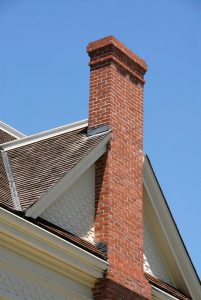We’ve often talked about the importance of having regular fireplace and chimney inspections for any home that has a fireplace. Standard Level 1 inspections make sure a chimney can vent properly and that there isn’t a potentially dangerous buildup of creosote that can lead to a fire.
However, we’ve often found that people who have gas fireplaces rather than wood-burning fireplaces think they don’t need these regular inspections. After all, gas fireplaces burn cleanly, without the concern of the buildup of creosote and soot, so why would they require routine inspections from professionals?
The answer is in the title: gas fireplaces absolutely need to have regular inspections. We’ll explain why a routine fireplace and chimney inspection in Plymouth, MN is necessary even if you aren’t burning wood logs in the fireplace.
Buildup
The debris that can build up in a chimney isn’t limited to the byproducts that come from combusting wood logs. You have to worry about debris that can come from the weather and pests, and also through damage to other parts of the chimney. The animal nesting problem is especially common in Minnesota, where birds, rats, and even raccoons can nest inside the warmth and protection of the chimney.
And creosote can come from a gas fireplace—it’s not limited to wood. Creosote will still develop in small amounts because of the incomplete combustion of gas. You’ll need to occasionally have it removed or the gradual accumulation will become a fire hazard.
Gas Safety
Any appliance that uses natural gas can become a potential safety hazard due to gas leaks and possible external combustion (in the case of a gas fireplace, this means combustion outside of the firebox). Fireplace inspections look closely at gas valves and thermocouples and any other component connected to the fireplace’s safe operation and also search for gas leaks.
Chimney Damage
A major part of any chimney inspection is to locate damage to the chimney lining or mortar—and these can affect any type of fireplace chimney. The major concern is that heat may escape through the chimney and ignite building material in the home. If inspectors find damage to the chimney, they’ll recommend doing a Level 2 inspection to get a better idea of what types of repairs may be necessary.
Hearth Damage
The hearth can also suffer from structural damage, such as due to cracks as the hearth settles into the floor. If this issue isn’t attended to, it can lead to serious structural damage and even collapse. People often ignore this type of damage, which is a serious mistake.
Locate and Replace Worn Parts
Gas fireplaces will wear down with time and need to have components replaced. Inspectors look over ceramic logs, gas hoses, couplings, valves, and other parts that will wear down and replace them if necessary. This allows the fireplace to work more efficiently, effectively, and with the reduced chance of safety worries from carbon monoxide or fires outside of the firebox.
2nd Generation Chimneys, Inc. serves Minneapolis, St. Paul and the Surrounding Communities. Call us for regular chimney inspections.

